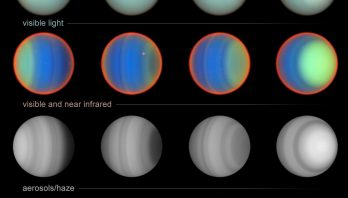
20-Year Hubble Study of Uranus Yields New Atmospheric Insights
The ice-giant planet Uranus, which travels around the Sun tipped on its side, is a weird and mysterious world. Now, ...
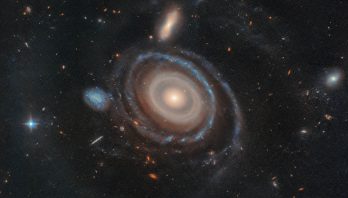
Straight Shot: Hubble Investigates Galaxy with Nine Rings
NASA's Hubble Space Telescope has captured a cosmic bullseye! The gargantuan galaxy LEDA 1313424 is rippling with nine star-filled rings ...
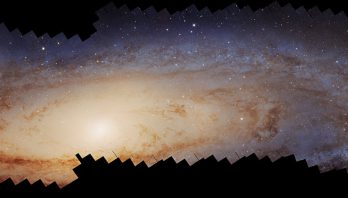
NASA’s Hubble Traces Hidden History of Andromeda Galaxy
In the years following the launch of NASA's Hubble Space Telescope, astronomers have tallied over 1 trillion galaxies in the ...
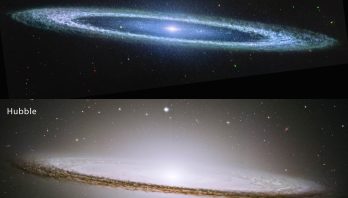
Hats Off to NASA’s Webb: Sombrero Galaxy Dazzles in New Image
In a new image from NASA’s James Webb Space Telescope, a galaxy named for its resemblance to a broad-brimmed Mexican ...
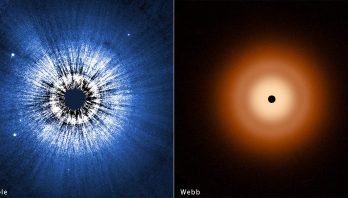
NASA’s Hubble, Webb Probe Surprisingly Smooth Disk Around Vega
A team of astronomers at the University of Arizona, Tucson used NASA's Hubble and James Webb space telescopes for an ...
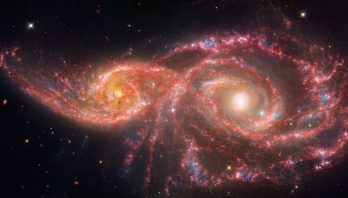
‘Blood-Soaked’ Eyes: NASA’s Webb, Hubble Examine Galaxy Pair
The gruesome palette of these galaxies is owed to a mix of mid-infrared light from NASA’s James Webb Space Telescope, ...
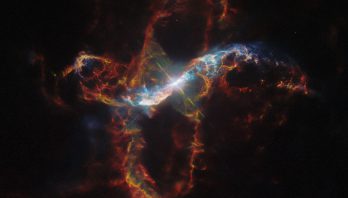
NASA’s Hubble Sees a Stellar Volcano
NASA's Hubble Space Telescope has provided a dramatic and colorful close-up look at one of the most rambunctious stars in ...
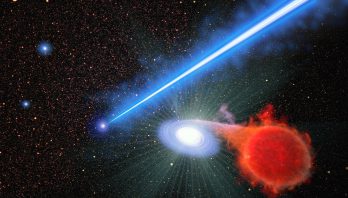
NASA’s Hubble Finds that a Black Hole Beam Promotes Stellar Eruptions
In a surprise finding, astronomers using NASA's Hubble Space Telescope have discovered that the blowtorch-like jet from a supermassive black ...
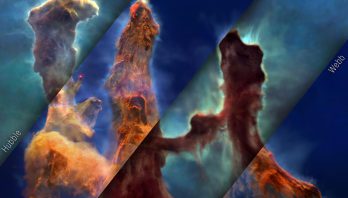
Pillars of Creation Star in New Visualization from NASA’s Hubble and Webb Telescopes
Made famous in 1995 by NASA's Hubble Space Telescope, the Pillars of Creation in the heart of the Eagle Nebula ...
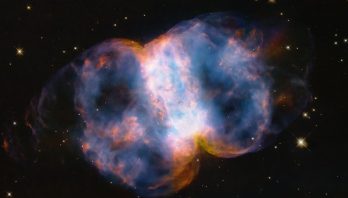
Hubble Celebrates 34th Anniversary with a Look at the Little Dumbbell Nebula
In celebration of the 34th anniversary of the launch of NASA's legendary Hubble Space Telescopeon April 24, astronomers took a snapshot ...
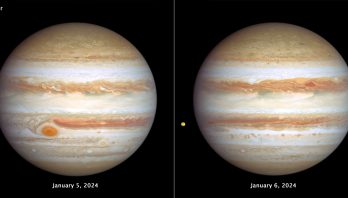
Hubble Tracks Jupiter’s Stormy Weather
The giant planet Jupiter, in all its banded glory, is revisited by NASA's Hubble Space Telescope in these latest images, ...

NASA’s Webb, Hubble Telescopes Affirm Universe’s Expansion Rate, Puzzle Persists
When you are trying to solve one of the biggest conundrums in cosmology, you should triple check your homework. The ...
